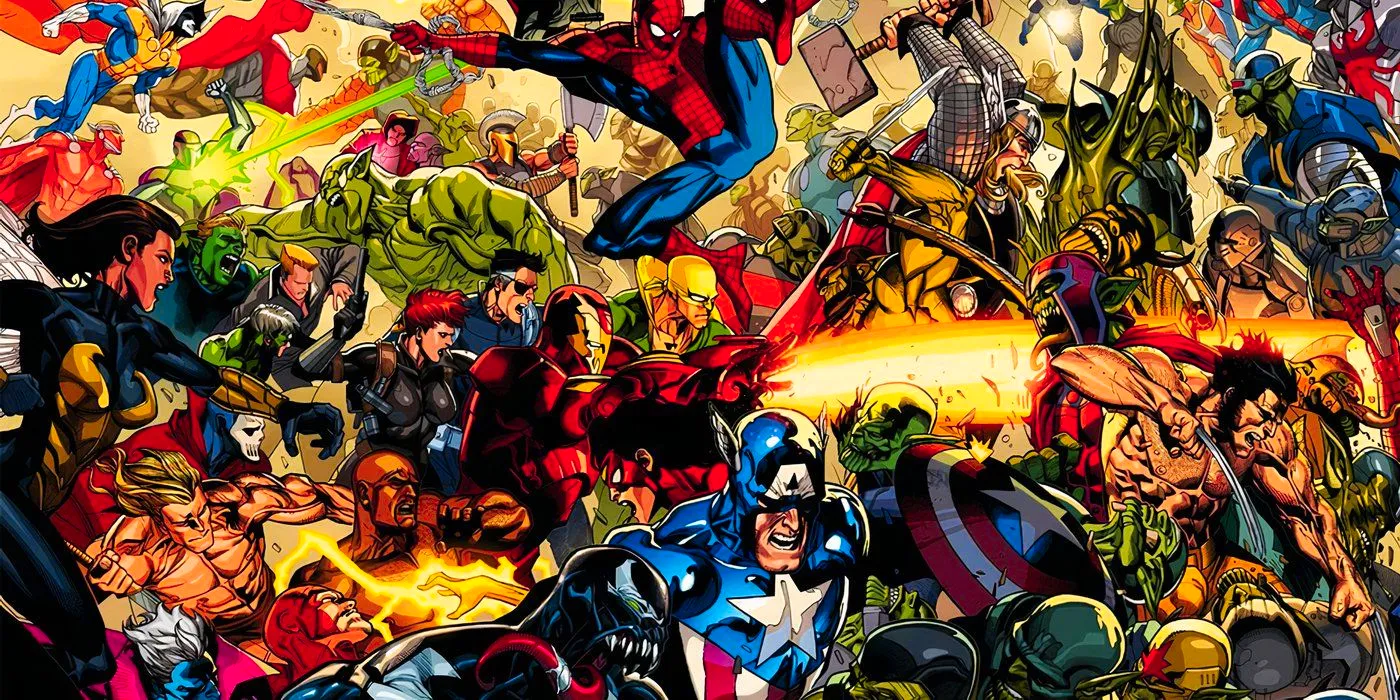X-Men Senior Editor reveals the reason for Marvel's "Sliding Timeline"
Marvel Comics readers must comprehend the company's "Sliding Timeline" in order to engage with the multiple narrative threads that make up its fictional Universe. When asked to provide ages for a number of X-Men characters, Senior Editor Tom Brevoort strongly disliked the practice, writing:
I believe that attempting to pin down this information is nearly always a mistake...and one that just leads to disagreements among fans. So, I think it should be avoided.
This is consistent with Marvel's longtime practice and reflects a clear editorial ethos: the storytelling purpose of the company's characters is too broad to allow for linear aging. Instead, characters' ages are generally fixed in respect to the present real-world era. Brevoort elaborated further on this principle:
But, in general, the current Marvel Universe has been around for around 15 years, give or take. That is, regardless of the year, the Fantastic Four's origin occurred approximately 15 years ago.
Marvel Comics readers must comprehend the company's "Sliding Timeline" in order to engage with the multiple narrative threads that make up its fictional Universe.
Marvel's characters are fixed in age, relative to the real world.
In many ways, Marvel, DC, and any huge, continuous franchise storytelling must keep its characters mostly the same age. According to Tom Brevoort, "there's a tendency among readers to expect the characters to age along with them," and it is this natural desire that
...leading folks to believe Cyclops is 45 years old or something. But that's not how it works.
While a 45-year-old Cyclops would be great in certain types of stories, the stories Marvel wants to tell with the character require him to be younger. Though there is undeniable merit in allowing characters to age, Marvel's overall editorial stance rejects it since it radically alters the main purpose of its most well-known characters.
Obviously, there are exceptions to any rule. Tom Brevoort admitted that some character histories are irreversible, hence the policy does not cover them. As the incoming head of Marvel's X-Office, Brevoort mentioned possibly the company's most visible example of this, the Master of Magnetism:
Magneto is by far the oldest, nearly double the age of anyone else, because his origins are inextricably related to a historical event, the concentration camps of WWII, and thus he must have been born in the 1930s.
However, despite Magneto gradually becoming a generation older than his classmates, Marvel will continue to emphasize him as one of its major mutant characters. However, it will have to employ him in a different way as time passes.
Marvel's long-standing timeline policy has been pivotal to their success.
By investing years and decades in their fandom, readers have effectively communicated that Marvel's continuous reliance on the same cast of characters is justified.
With his explanation of Marvel's history, X-Men Editor Tom Brevoort claimed that viewers who want to know the ages of their favorite characters are actually asking a more basic question about Superhero Storytelling.
But what you're actually asking is how we can squeeze so many stories into such a small space.
To this, Brevoort responded:
The explanation is that it is fiction, therefore we can do whatever we want as long as the readership supports it.
In this regard, Brevoort echoed writer Jonathan Hickman's canon position. More broadly, the Marvel Editor implied that the publisher's "sliding timescale" has always had the tacit approval of its readers, even if they haven't fully defined or realized it.
By investing years and decades in their fandom, readers have effectively communicated that Marvel's continuous reliance on the same cast of characters is justified. While fans prefer fresh spins on established Marvel franchises, they are always interested to see what their favorite characters do on the page or in a number of other mediums. Despite their criticism of Marvel's narrative, most fans return for the characters.
Everything You Should Know About Marvel's "Floating Timeline"
Marvel continuity has traditionally been based on a "floating timeline," in which just a few characters' backstories are concretely bound to history, allowing the majority of the company's most iconic heroes and villains to remain forever in their prime. As Senior Editor Tom Brevoort takes over the company's X-Men titles for the "From the Ashes" relaunch, he has provided insight into the practical and artistic issues that underpin the "floating timeline."
In a Substack post, Brevoort answered to a fan's concern about the ages of the X-Men by making an elaborate apology for Marvel's "floating" or "sliding" history. As he pointed out, aging characters in real time - or anything close to it - is an unsustainable enterprise. While there are few exceptions to this general rule, which Brevoort's theory allows for, he admitted that Marvel's fictional characters are created to be relevant to the current moment, allowing Marvel Comics storylines to be continuously current.
X-Men: A History of Mutants.
The X-Men franchise, developed by Stan Lee and Jack Kirby, revolves around mutants with amazing abilities. They are led by the strong telepath Professor Charles Xavier in their fight against bigotry and malevolent mutants who endanger humanity. The series, which spans comics, animated programs, and blockbuster blockbusters, investigates themes of diversity and inclusion through a combination of action, drama, and fascinating characters.
The X-Men have emerged as one of comics' most renowned and adored franchises. The stories address issues of prejudice, acceptance, and the difficulties of being different in a world that frequently fears what it does not comprehend. The X-Men have had multiple successful film, television, and video game adaptations, reaching a global audience with their powerful message and engaging stories.



